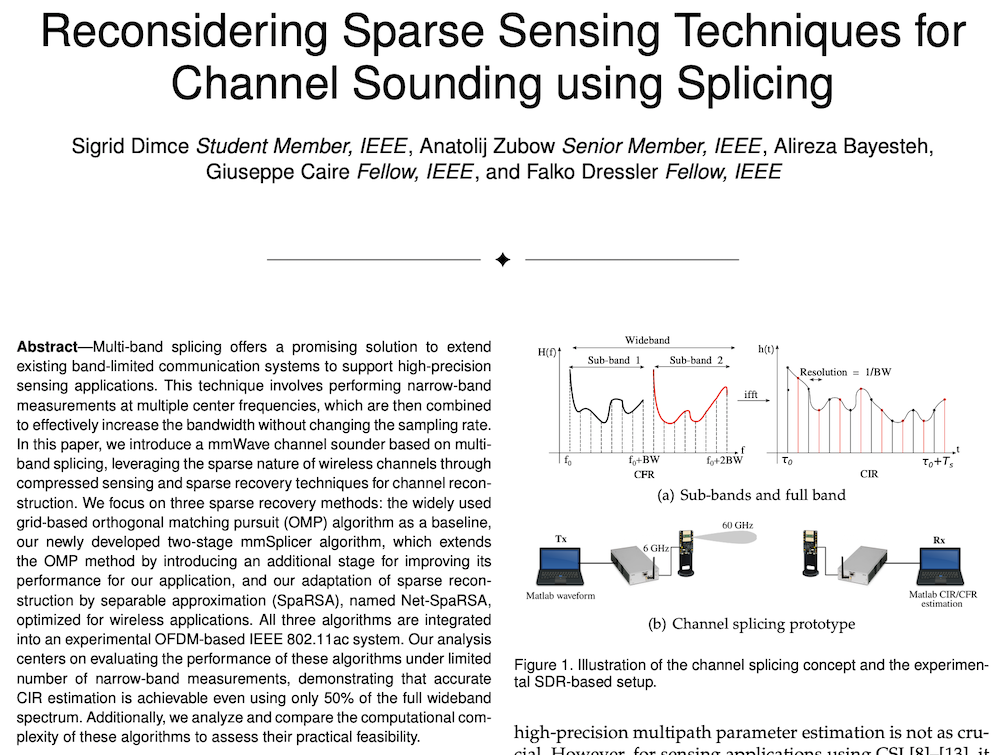Literature Database Entry
dressler2010integrated
Falko Dressler, Abdalkarim Awad, Sebastian Dengler and Reinhard German, "Integrated RFID and Sensor Networks for Smart Homes," in RFID and Sensor Networks: Architectures, Protocols, Security and Integrations, Wireless Networks and Mobile Communications, Yan Zhang, Laurence T. Yang and Jiming Chen (Eds.), CRC Press, 2010, pp. 537–558.
Abstract
The quick evolution of technology has enabled us to bring many things to reality in short periods of time. Thus, the vision of smart homes will become more feasible in the near future. Technologies such as wireless senor networks (WSNs) and radio frequency identification (RFID) have attractive characteristics that make them great candidates to be engaged in this environment that can greatly benefit from each other. Smart Home, this term comprises various approaches, engaged in living and working now and in the future. The objectives of the various approaches range from enhancing comfort in daily life to enabling a more independent life for elderly and handicapped people. The term Ubiquitous Computing, coined by Mark Weiser in his essay The Computer for the 21st Century, describes the ubiquity of computer and information technology. The task of Smart Objects, implanted into everyday items, is to sense the immediate environment using various types of sensors, and to process these information. This functionality assigns a kind of artificial intelligence to common, well known objects and enables comprehensive information-processing and interconnection of almost any kind of everyday object. The (preferably) transparent and hidden technology ranges from Wearable Computers and Smart Clothes to 'intelligent' artificial replacements. It supports the user in almost every part of his life by extending his cognition and information processing capacity and tries to compensate for certain handicaps. The challenge regarding smart homes, especially for supporting the elderly and handicapped, is to compensate for handicaps and support the individual in order to give them a more independent life for as long as possible. In this paper, a common architecture for smart home environments is developed, mapped to an experimental setup, and finally evaluated. This architecture primarily consists of a sensor network that is functionally enhanced by mobile robots and passive RFID tags, which in turn complement the functionality of the sensor network.
Quick access
Authors' Version ![]() (PDF on this web site)
(PDF on this web site)
BibTeX ![]()
Contact
Falko Dressler
Abdalkarim Awad
Sebastian Dengler
Reinhard German
BibTeX reference
@incollection{dressler2010integrated,
author = {Dressler, Falko and Awad, Abdalkarim and Dengler, Sebastian and German, Reinhard},
title = {{Integrated RFID and Sensor Networks for Smart Homes}},
pages = {537--558},
booktitle = {RFID and Sensor Networks: Architectures, Protocols, Security and Integrations},
editor = {Zhang, Yan and Yang, Laurence T. and Chen, Jiming},
address = {Boca Raton, FL},
isbn = {978-1-4200-7777-3},
publisher = {CRC Press},
series = {Wireless Networks and Mobile Communications},
year = {2010},
}
Copyright notice
Links to final or draft versions of papers are presented here to ensure timely dissemination of scholarly and technical work. Copyright and all rights therein are retained by authors or by other copyright holders. All persons copying this information are expected to adhere to the terms and constraints invoked by each author's copyright. In most cases, these works may not be reposted or distributed for commercial purposes without the explicit permission of the copyright holder.
The following applies to all papers listed above that have IEEE copyrights: Personal use of this material is permitted. However, permission to reprint/republish this material for advertising or promotional purposes or for creating new collective works for resale or redistribution to servers or lists, or to reuse any copyrighted component of this work in other works must be obtained from the IEEE.
The following applies to all papers listed above that are in submission to IEEE conference/workshop proceedings or journals: This work has been submitted to the IEEE for possible publication. Copyright may be transferred without notice, after which this version may no longer be accessible.
The following applies to all papers listed above that have ACM copyrights: ACM COPYRIGHT NOTICE. Permission to make digital or hard copies of part or all of this work for personal or classroom use is granted without fee provided that copies are not made or distributed for profit or commercial advantage and that copies bear this notice and the full citation on the first page. Copyrights for components of this work owned by others than ACM must be honored. Abstracting with credit is permitted. To copy otherwise, to republish, to post on servers, or to redistribute to lists, requires prior specific permission and/or a fee. Request permissions from Publications Dept., ACM, Inc., fax +1 (212) 869-0481, or permissions@acm.org.
The following applies to all SpringerLink papers listed above that have Springer Science+Business Media copyrights: The original publication is available at www.springerlink.com.
This page was automatically generated using BibDB and bib2web.






